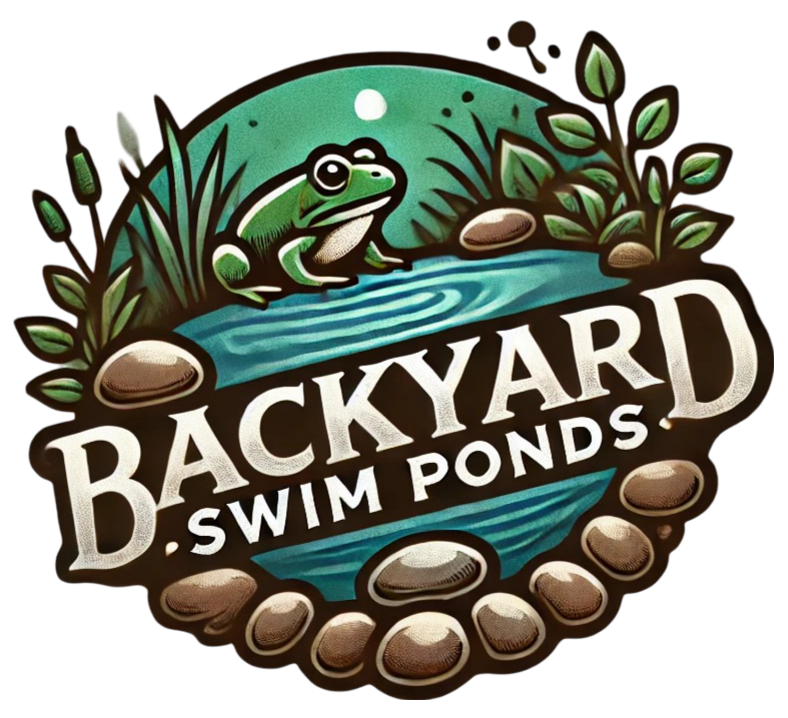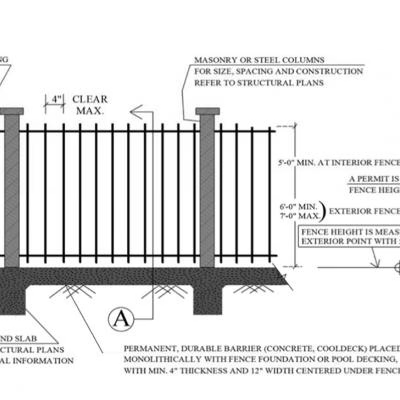Creating a beautiful and secure swim pond entrance enhances both your property’s appeal and its safety. Whether you’re building from the ground up or redesigning an existing pond, it’s essential to combine safety features with aesthetic charm. This guide will help you navigate the important aspects of swim pond entrance design, including local regulations, material choices, aesthetics, sustainable practices, and accessibility. By the end, you will be well-equipped to create swim pond entrances that prioritize both beauty and safety.
Understanding Safety Standards for Swim Ponds
Safety is the foremost priority when designing swim pond entrances, especially in areas like California where regulations govern residential water features. California law mandates that residential swim ponds are equipped with at least two drowning prevention features. These could include a fence at least 60 inches high, gates that self-close and self-latch, as well as alarms or safety covers. You’ll also need the right permits to begin construction, and these plans may need to be prepared by a licensed professional. Compliance with these safety standards not only protects users but also helps you avoid potential legal issues.
Infographic outlining safety standards for residential swim ponds in California, including fencing and signage. (Source: Chandler AZ)
Regular inspections during the construction process can ensure that safety features are installed correctly. Furthermore, local building authorities may vary in their requirements, so consulting with them will give you precise information about what is necessary in your area. By focusing on safety, you provide peace of mind for all users and create a secure environment for everyone.
Choosing the Right Design and Materials for Swim Pond Entrances
The design and materials you choose for your swim pond entrance can greatly influence both safety and aesthetics. You should consider whether a sloped or shelved entry is more suitable for your landscape. A sloped entry, designed with a gentle beach-like gradient, can provide easy access while helping to minimize erosion. On the other hand, a shelved entry might lend a more structured appearance with built-in steps.
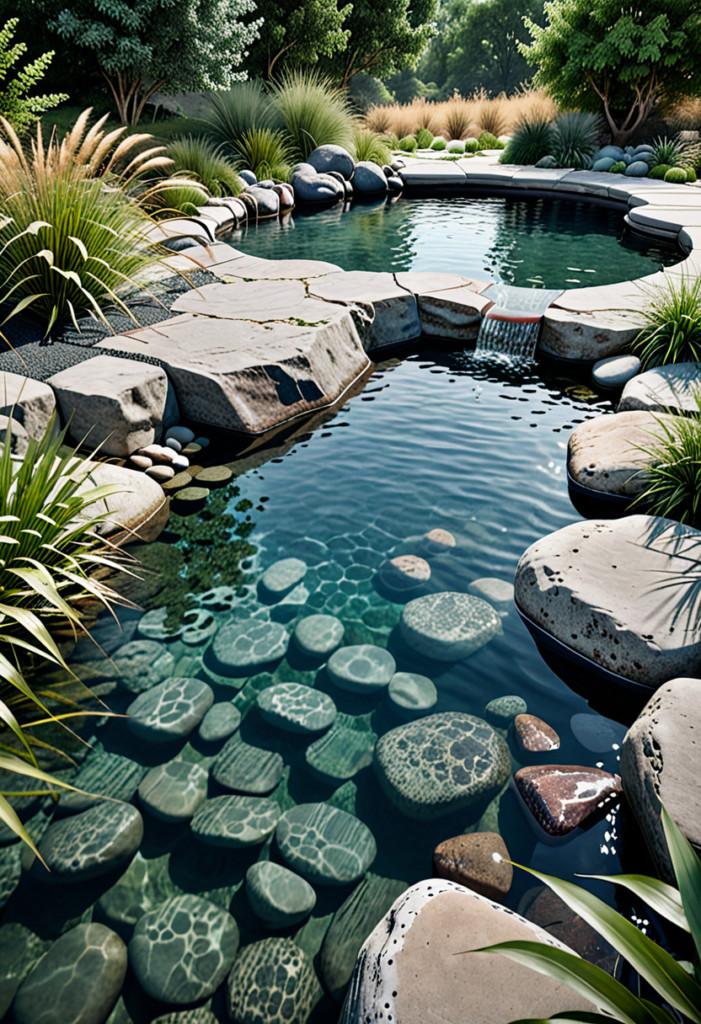
Various entrance designs for natural swimming ponds, showcasing both sloped and shelved options. (Source: Home Decor Full)
When it comes to materials, consider using eco-friendly options such as biodesign coatings, natural stones, or recycled glass tiles. These materials not only contribute to durability but also beautifully complement the surrounding landscape. Biodesign coatings are known for their strength and sustainability, while natural stones offer timeless beauty that can last for decades. While these materials might incur higher upfront costs, they often result in long-term savings due to lower maintenance needs.
Best Practices for Erosion Control in Swim Pond Entrances
Effective erosion control is vital for maintaining the integrity of your swim pond entrance. By implementing efficient erosion management strategies, you ensure that your entrance remains stable and visually appealing over time. One effective method is to design gentle slopes with a maximum ratio of 1:12. This design not only strengthens safety but also integrates seamlessly with the natural environment.
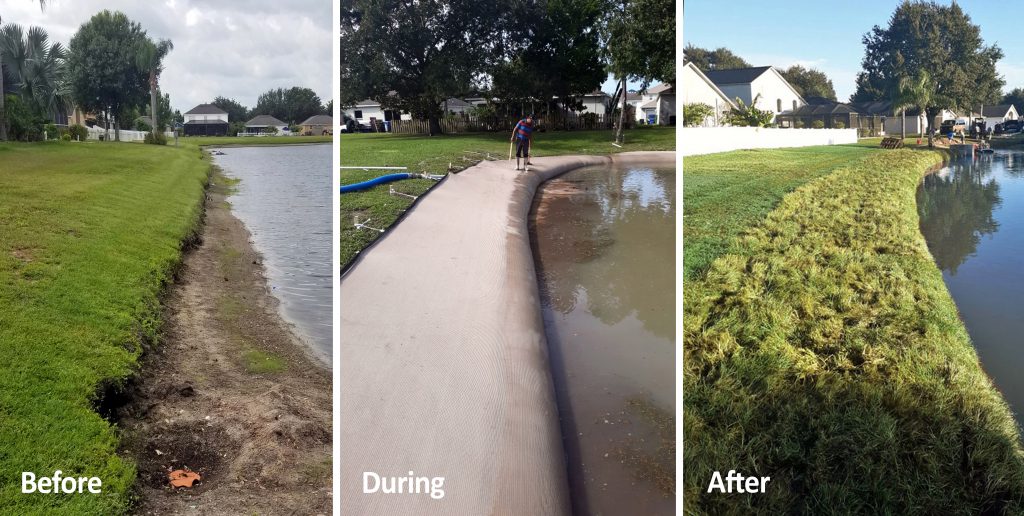
Before and after image highlighting effective erosion control techniques around pond areas. (Source: Solitude Lake Management)
Incorporating native plants around the pond can significantly stabilize the soil. Their roots bind the earth and help absorb excess water, ultimately reducing the risk of erosion. Regular inspections for signs of wear or shifting will help you address issues before they become costly problems. By combining effective erosion control measures with the beauty of plants, you contribute to a sustainable environment.
Integrating Aesthetic Values in Your Swim Pond Design
A thoughtfully designed swim pond entrance should blend naturally with its surroundings and reflect your personal style. Using natural materials, like flagstones or local river rocks, is an effective way to achieve this. Incorporating curved edges and organic shapes mimics natural water bodies, softening the overall look and making the entrance feel more integrated.
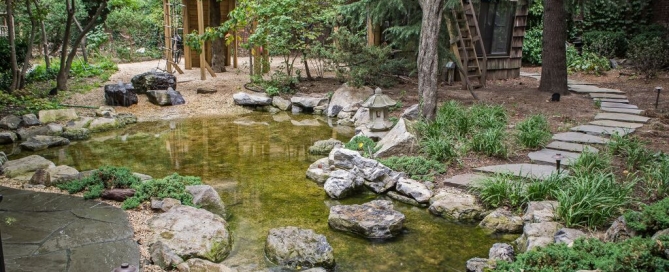
An appealing landscaped swim pond with elegant entrance integration. (Source: Deck & Patio)
Creating focal points—such as decorative stepping stones, integrated lighting, or water features—can enhance the visual appeal while also improving safety and accessibility. Many modern designs utilize subtle lighting to enhance both ambiance and visibility, making the entrance inviting at any time of day. By thoughtfully blending natural elements with well-planned design, you can achieve a swim pond entrance that stands out aesthetically while remaining functional.
Ensuring Long-Term Sustainability in Swim Pond Entrances
Long-term sustainability for swim pond entrances involves an ongoing commitment to maintenance and eco-friendly practices. Regular inspections should be part of your routine to assess both the entrance structure and the water quality. Sustainable practices can include utilizing native plants and minimizing chemical inputs to maintain the pond’s purity.

Infographic detailing essential maintenance practices for swim ponds, with an emphasis on sustainability. (Source: Exmark)
Routine care— such as removing debris, checking for algae, and treating the water—will help preserve the health of your pond and its environment. Establishing a quarterly maintenance plan can keep you on track for long-term sustainability. Selecting renewable and ethically sourced materials will further support environmental stewardship.
Navigating Accessibility Standards for Public Recreational Swim Ponds
Making your swim pond accessible is essential, especially in public settings. Compliance with the Americans with Disabilities Act (ADA) is crucial. Public swim ponds must provide accessible entry options, which could include pool lifts or gently sloped pathways for those requiring assistance.
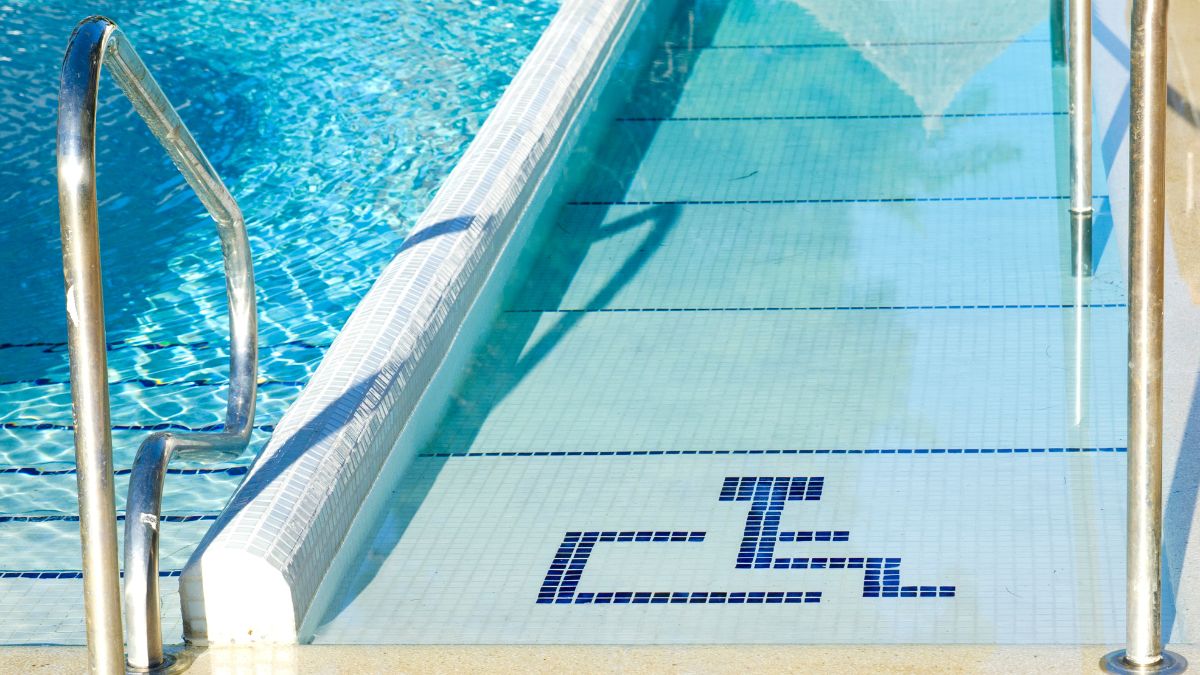
Visual representation of an accessible pool ramp, highlighting ADA compliance features. (Source: Wheelchair Getaways)
When designing sloped entries, adherence to specific regulations is necessary. This includes a minimum width of 36 inches and a maximum slope of 1:12. Handrails are often required to ensure safety. Ensuring accessible pathways connect seamlessly with designated entrances cultivates an inviting atmosphere for all visitors, reinforcing a community-oriented approach.
Incorporating ADA features may require additional planning, but ultimately, it enhances the overall visitor experience while ensuring compliance with legal standards.
Conclusion
In conclusion, crafting safe and aesthetic swim pond entrances calls for thoughtful planning, adherence to regulations, and a balance of safety and visual appeal. By integrating sustainable practices and inclusive design elements, you can create a space that fulfills the needs of all users while offering a beautiful oasis for relaxation and recreation. As a homeowner or landscape architect, focusing on these key aspects will lead to swim pond entrances that not only elevate property value but also contribute positively to the surrounding environment.
